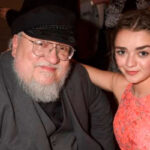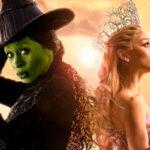

The iconic 1989 film “Batman,” directed by Tim Burton and starring Michael Keaton as the Dark Knight, marked a turning point in the history of superhero movies. The production brought a new approach to the dark universe of Batman, contrasting sharply with the more colorful and campy versions of the previous decades. Through an innovative script and a Gothic aesthetic, Burton managed to reinvent the hero while offering a complex and atmospheric view of Gotham City. Additionally, the film is memorable for its soundtrack, composed by Danny Elfman, and for Jack Nicholson’s striking performance as the Joker. As we delve into trivia about this 1989 classic, we will uncover fascinating details about its production, behind-the-scenes aspects, and how it influenced the superhero genre in the decades that followed.
1 – THE JOKER COULD HAVE BEEN ANOTHER FAMOUS ACTOR
The role of the Joker was initially offered to Robin Williams when Jack Nicholson hesitated to accept it. Williams agreed to take on the role, but the producers informed Nicholson that if he did not accept, the role would go to Williams. Nicholson eventually agreed to portray the villain, and Williams was released from his contract. Feeling used as a negotiating tactic, Williams not only declined the role of the Riddler in “Batman Forever” but also distanced himself from any Warner Bros. projects until the studio issued a formal apology.
2 – THE SUIT WAS UNCOMFORTABLE
Michael Keaton couldn’t hear while wearing the suit. He also mentioned that his claustrophobia helped him achieve the right mood for Batman, making him even more introverted, as he wanted the character to be distant and closed-off.
3 – BLONDE OR REDHEAD?
During filming, actress Kim Basinger had blonde hair, while the character Vicki Vale was a redhead in the comics. However, according to Bob Kane, the creator of Batman, the original intention was for Vicki Vale to be blonde. The red hair she had in her first comic appearance was a result of a coloring mistake.
4 – MICHAEL KEATON FACED A LOT OF BACKLASH FROM COMIC BOOK FANS
The choice of Michael Keaton to play Bruce Wayne/Batman sparked significant controversy among comic book fans, resulting in 50,000 protest letters sent to Warner Bros. studios. Additionally, Bob Kane, the creator of Batman, Sam Hamm, the film’s screenwriter, and Michael Uslan, the producer, also expressed doubts about the decision.
5 – STANDING-OVATION TRAILER
To counter the criticism and negative rumors about the production, a 90-second trailer was created and released in a California theater without any prior notice. At the end of the trailer, everyone stood up and applauded, a reaction that would become common in the world of comic book films.
6 – BATMAN’S CREATOR NEARLY MADE A CAMEO IN THE FILM
Batman’s creator, Bob Kane, was set to make a cameo in the film (similar to Stan Lee’s appearances in Marvel films today), but he fell ill, and the scene was not rescheduled. Kane, however, did have a brief appearance in the 1995 film “Batman Forever.”
7 – SEVERAL ACTORS WERE CONSIDERED FOR THE HERO
Alec Baldwin, Jeff Bridges, Emilio Estevez, Matthew Broderick, Kevin Costner, Tom Cruise, Michael J. Fox, Harrison Ford, Robert Downey Jr., Kevin Spacey, Patrick Swayze, Dennis Quaid, Kurt Russell, Arnold Schwarzenegger, Mel Gibson, Charlie Sheen, Bill Murray, Pierce Brosnan, Tom Selleck, Daniel Day-Lewis, Tom Hanks, Kevin Kline, and Bruce Willis were considered for the role of Batman/Bruce Wayne. In the end, the role went to Michael Keaton.
8 – REWRITING THE ENDING
In the film’s original climax, the Joker was planned to kill Vicki Vale, driving Batman into a vengeful fury. However, Jon Peters rewrote the ending without informing Tim Burton and asked the production designer to build a 40-foot cathedral model. This change resulted in an additional cost of $100,000, exceeding the production’s budget.
9 – CHANGING THE MURDERER OF THE WAYNES
In the films, the Wayne’s murderer is Jack Napier, who eventually becomes the Joker; in the comics, it is Joe Chill. Despite the difference in names, the method of the murder and its repercussions on Bruce Wayne’s life are depicted similarly in both the comics and the film. The scenario involving Joe Chill was revisited in the 2005 film “Batman Begins.”
10 – TIM BURTON WAS BANNED FROM COMIC EVENTS
After the film’s release, Tim Burton was banned from comic book events for an extended period due to the significant changes from the original comics. The harshest criticism focused on the decision to make the Joker the murderer of the Waynes and the inclusion of Vicki Vale in the Batcave. Burton discusses these points in a commentary on the film’s DVD, where he also refutes responsibility for these choices.
11 – THE PENGUIN AND ROBIN ALMOST APPEARED IN THE FILM
The original script for the 1989 Batman film was written in the 1980s by Tom Mankiewicz, who was involved in the first Superman film. In this version of the story, Mankiewicz intended to introduce the Penguin alongside the Joker. Additionally, the film’s final moments would have revealed Robin’s presence to the fans. Kiefer Sutherland was even approached to play the young hero but declined the offer. Of course, when the script was rewritten, neither character made an appearance. The Penguin showed up in the sequel, while Robin only appeared in “Batman Forever,” which did not involve Tim Burton or Michael Keaton.
12 – BOX OFFICE SUCCESS
To this day, the 1989 “Batman” is one of the hero’s most profitable films when considering the cost: its budget was $35 million, but it earned over $411 million at the global box office—almost ten times its initial value!
The 1989 film “Batman” not only marked a new era for superhero movies but also generated a series of curiosities and controversies that continue to fascinate fans to this day. From the controversial casting of Michael Keaton in the lead role to the creative changes made without Tim Burton’s knowledge, each aspect of the production reflects the ambition and challenges faced by the team. The transformation of the Joker into a central villain and the influence of this film on the portrayal of Batman in pop culture demonstrate the lasting impact it had on the genre. Additionally, behind-the-scenes twists, such as the coloring error with Vicki Vale and the additional cost of the cathedral, reveal the highs and lows of creating a cinematic classic. Ultimately, the 1989 “Batman” remains a significant milestone and a rich source of intriguing stories for film and comic book enthusiasts.








